Affiliate links on Android Authority may earn us a commission. Learn more.
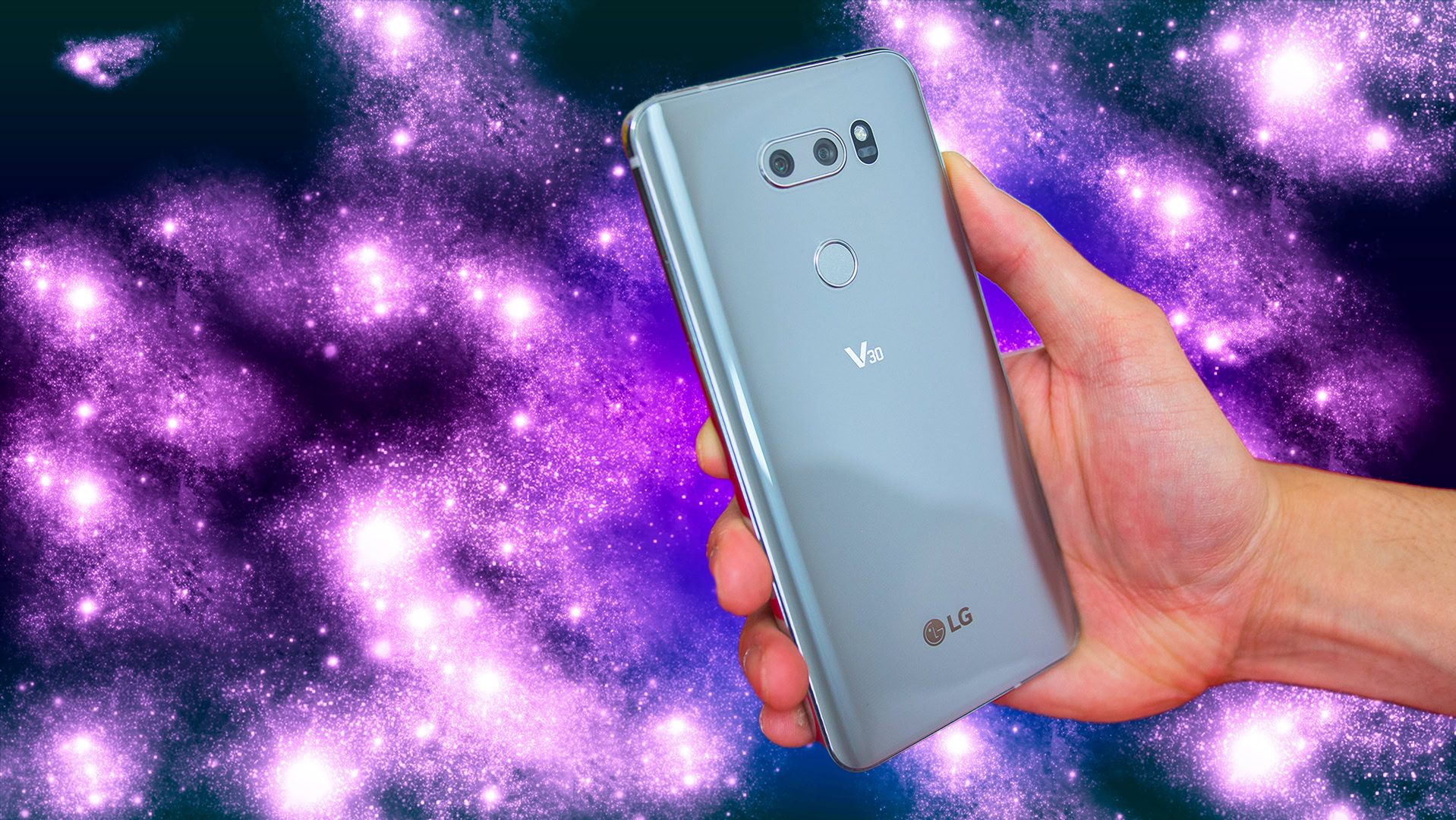
LG V30
What we like
What we don't like
Our scores
LG V30
The LG V series of smartphones has always been for those who want a phone that is a photo, video, and audio powerhouse. Now in its third iteration, LG aims to achieve that goal once again by refining its recipe even further. With a refreshed design, a bezel-less screen, and a host of new camera features, is the V30 the phone to beat this holiday season? Find out in our LG V30 review!
Read more: Best LG phones
Design
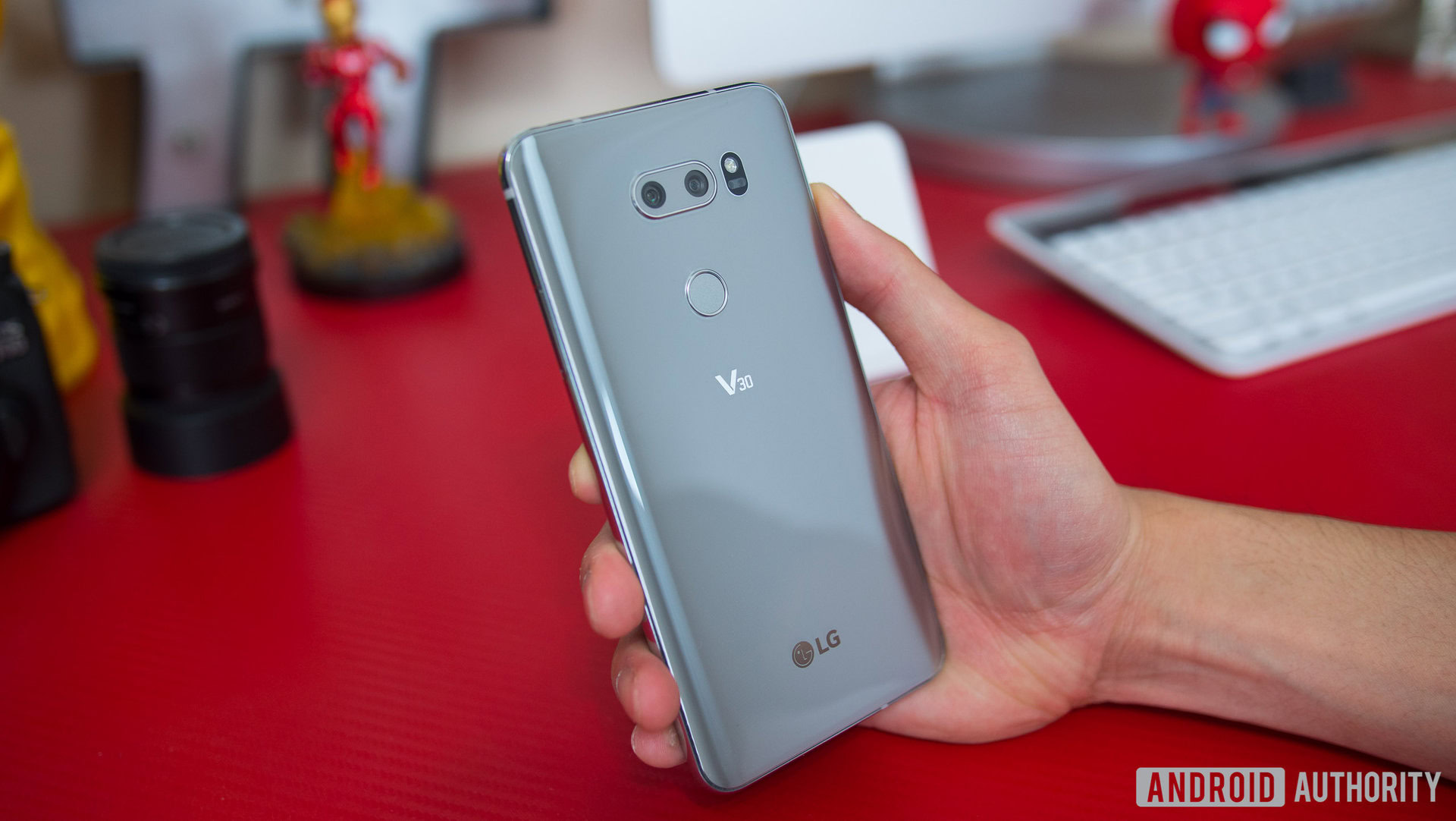
Most smartphone series tend to have iterative designs for a couple generations before completely revamping things. No series has changed more drastically since it’s inception than the V series. Instead of the G5-esque metal of last year’s V20, or the chunky duraskin of the original LG V10, the LG V30 now boasts a design that is very similar to many other smartphones on the market— it’s made of glass.
There’s glass on the phone’s front and back with a metal frame sandwiched in between. The glass gathers fingerprints quite easily, which is to be expected, but it’s not as slippery as you might expect, especially without any sort of added texture for grip. The corners and sides are rounded and the back has a slight taper along the edges, which gives it a sleek and comfortable feel. It’s easily one of the most comfortable and beautiful looking phones I’ve used this year.

Although the design and materials used are pretty different from previous V series entries, LG managed to retain a MIL-810G rating against shocks and drops despite the phone having a more luxurious appeal versus the V10 and V20’s more rugged looks.
Display
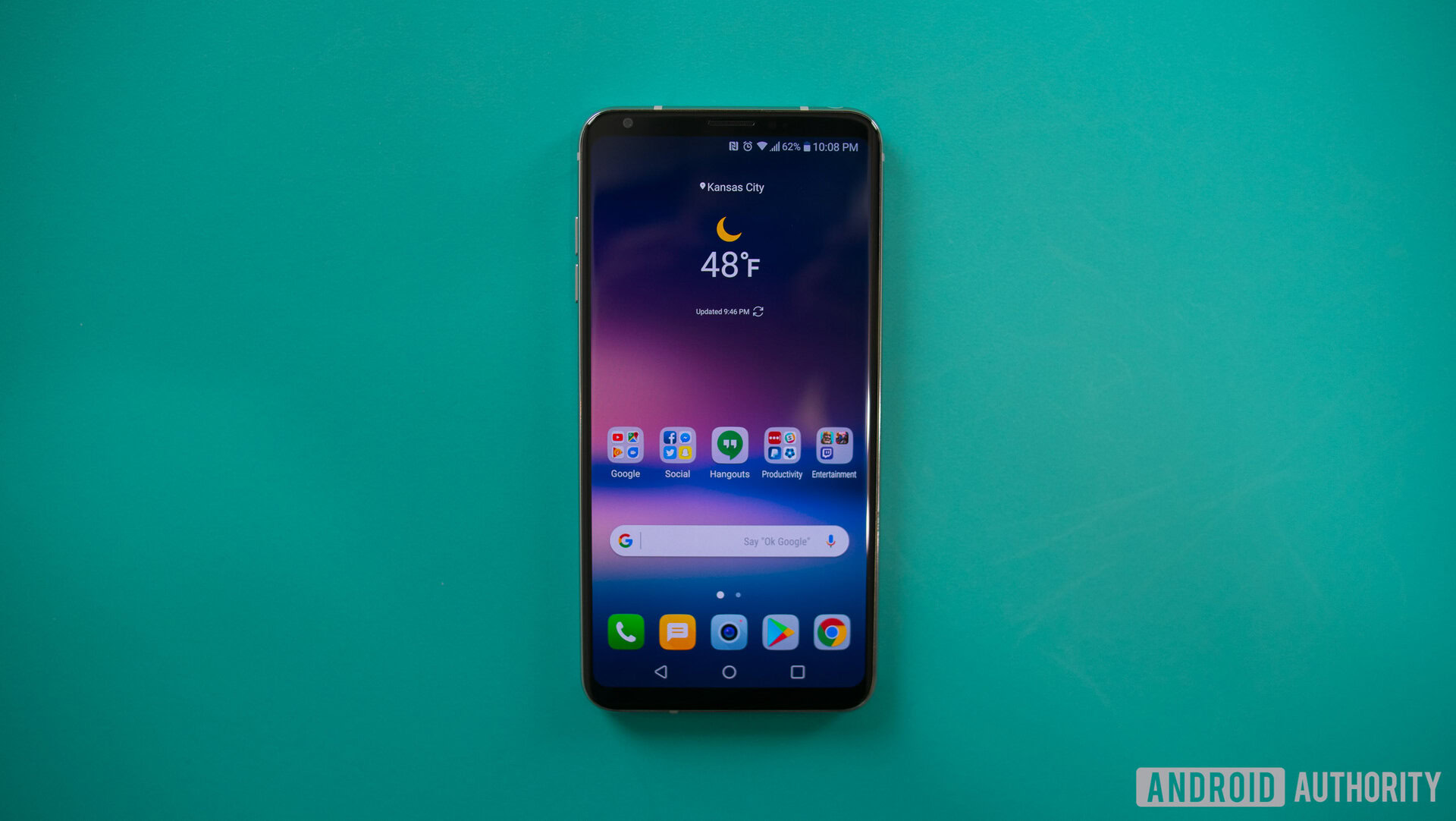
Another drastic change that LG made to the V30 this year is with the display. Not only has LG switched up the display technology but the once signature secondary screen is now gone. It lives on in the form of a software feature, but we’ll talk about that later.
The screen is now a 6.0-inch POLED display with 18:9 aspect ratio and a resolution of 2880 x 1440 or QHD+. LG calls the display a “Full Vision” display, a buzzword for a screen that practically goes edge to edge. By no means is the LG V30 a one-handed phone, but thanks to the aspect ratio and minimal bezels, it feels far more manageable than other 6-inch phones like the Nexus 6 or 6P.
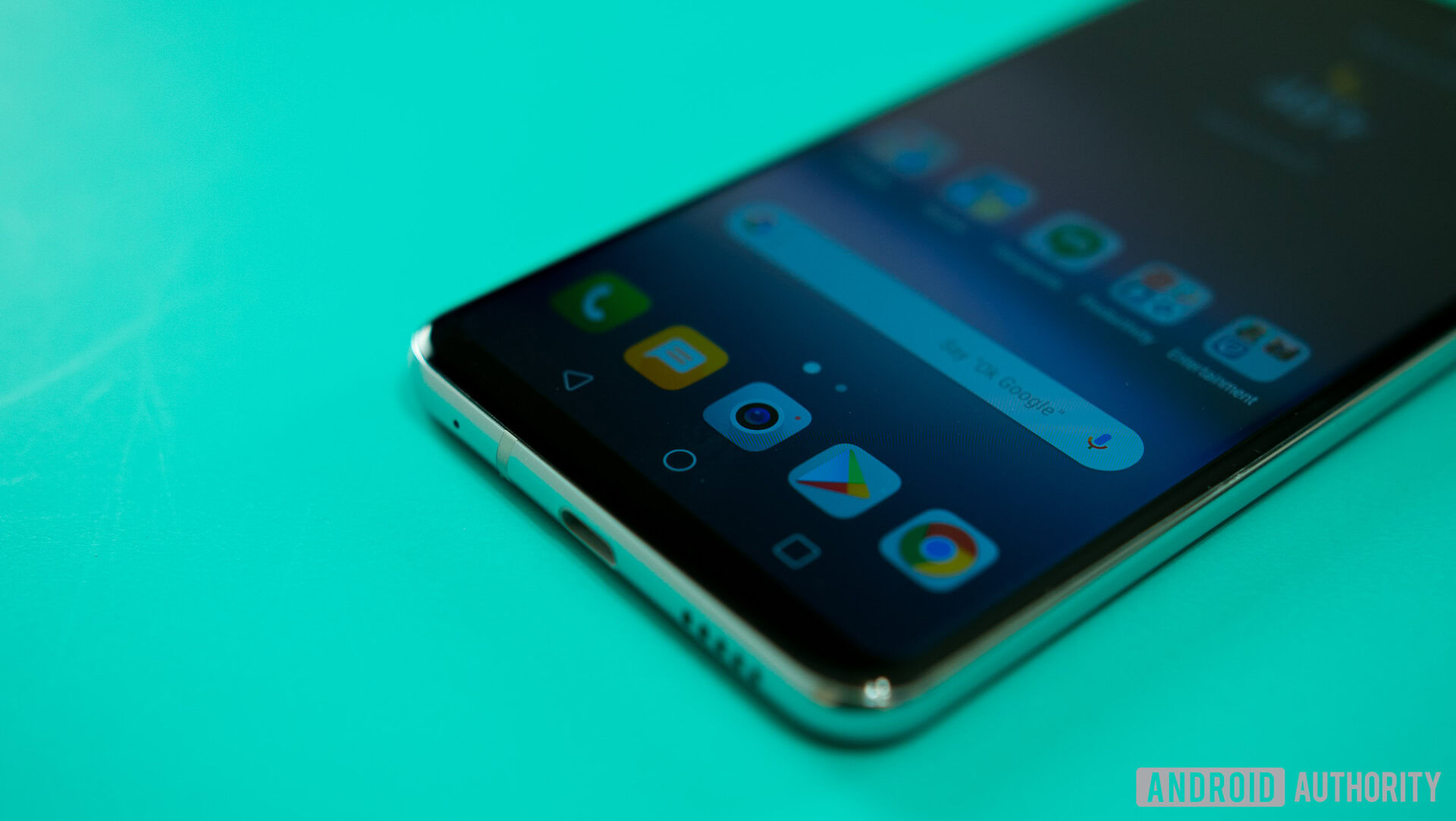
LG's switch back to OLED is certainly a welcome change.
LG’s switch back to OLED is certainly a welcome change and something for which many, including myself, have been waiting for a long time.
The display itself is gorgeous in every way imaginable. It’s easily LG’s best smartphone display to date and is one that can even give Samsung a run for its money. The colors are vibrant, the blacks are truly black thanks the OLED panel and it has fantastic contrast, too. Outside visibility is also quite good as it gets so bright that even under harsh sunlight the screen is still easy to read.
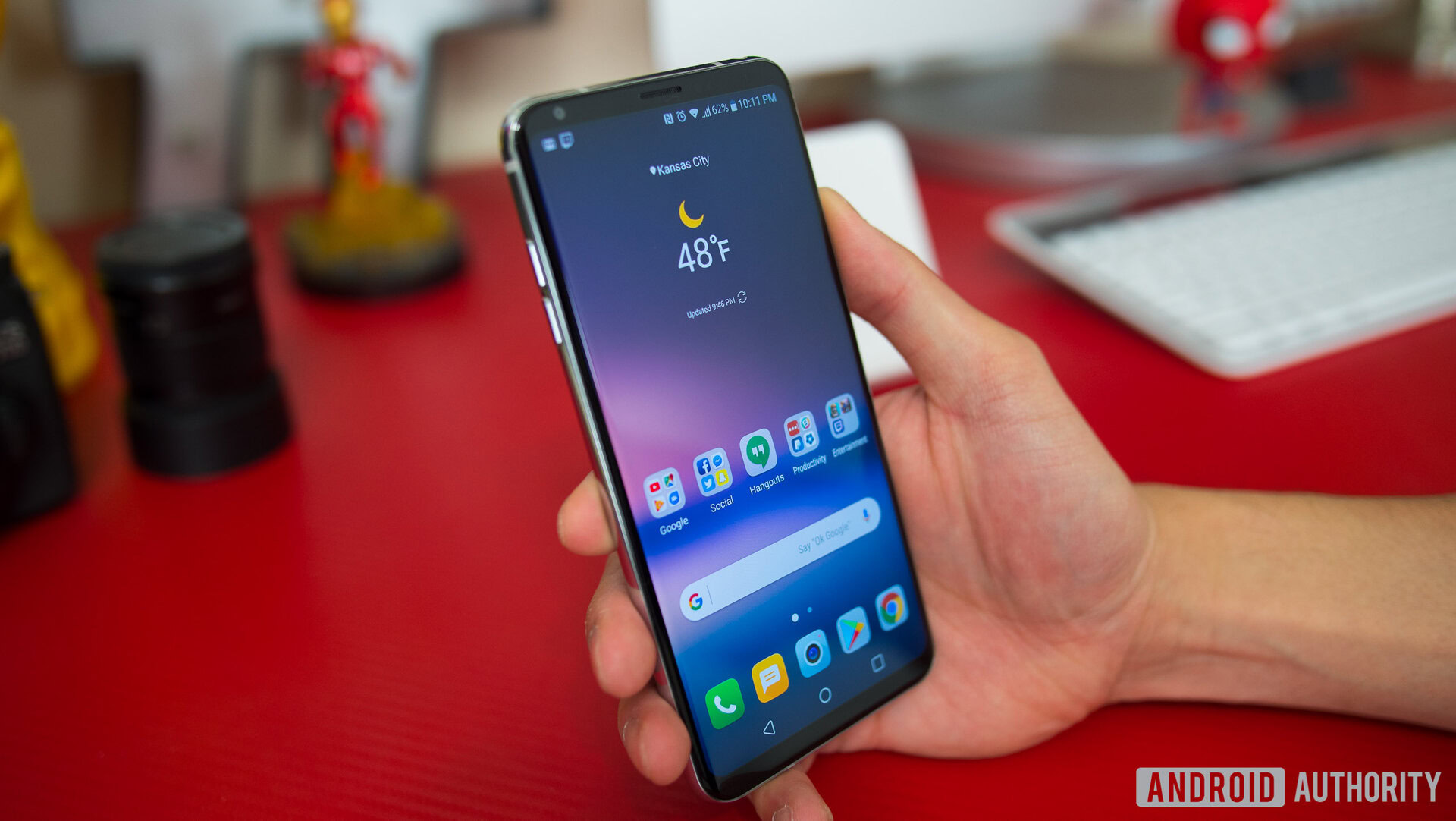
The large size is perfect for web browsing, checking social media, playing games, watching YouTube, or streaming Netflix, or whatever else you can throw at it. The V30’s display is just an absolute joy to use. There are still some apps out there which aren’t optimized for 18:9 though, so you will still experience letter- or pillar-boxing with videos or certain games, but I don’t find it to be that bothersome. 18:9 is still relatively new but it’s only a matter of time before developers catch up to the new standard.
Performance
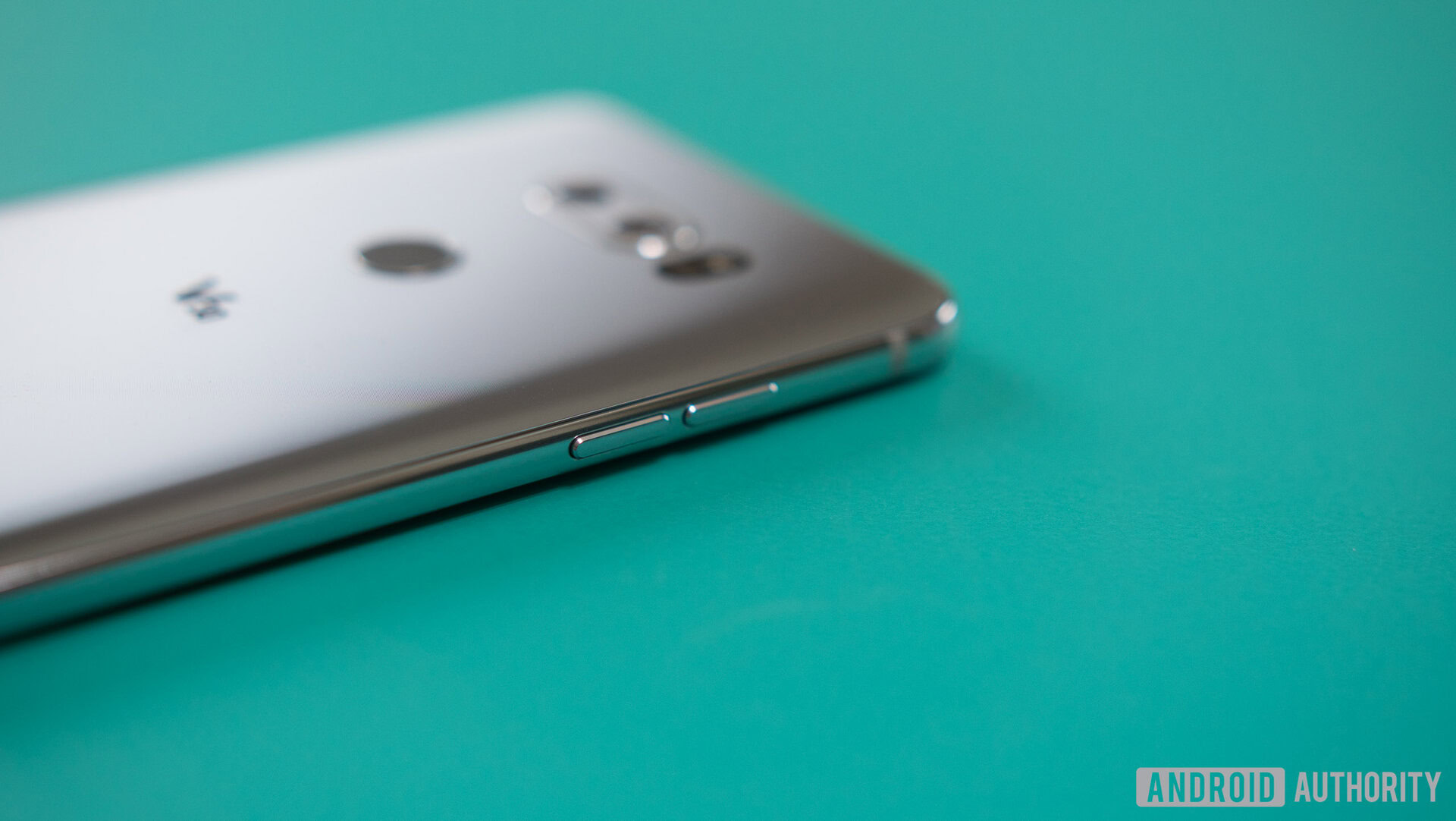
The specs of the LG V30 are fairly standard 2017 flagship specs. It’s powered by a Snapdragon 835 processor, 4 GB of RAM, and the Adreno 540 GPU. In everyday use, the V30 is fast, fluid, and responsive. Apps are quick to launch, scrolling and swiping through the interface is very smooth, and more graphics-intensive tasks such as games all run with no noticeable hiccups.
The V30's performance holds up well no matter how much you push it.
Multitasking has not been an issue either as the 4 GB of RAM is plenty for running apps without any slow down. It’s an all-round pleasurable experience and the V30 holds up well no matter how much you’re pushing the device.
Hardware
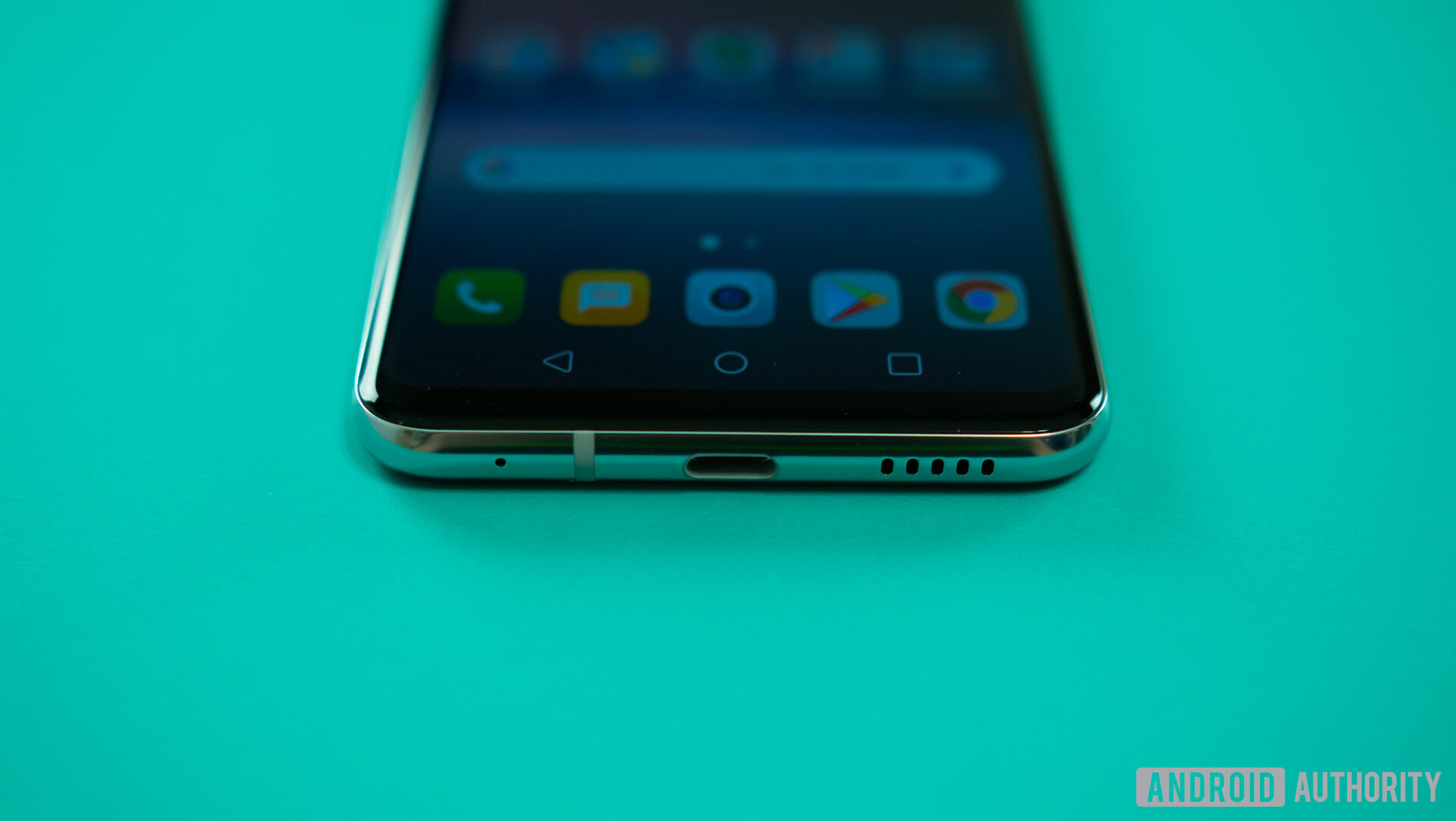
In terms of hardware the LG V30 comes packed to the gills. It provides everything you could want out of a 2017 flagship. The phone comes with 64 GB of storage and there’s a V30+ model which doubles the storage to 128 GB if you happen to live in a region where it’s available. In the U.S. the plus model is currently only available through Sprint. Storage is also expandable via microSD with support for up to an additional 256 GB if the phone’s internal storage is not enough for you. Its also got Bluetooth 5 on board for better wireless throughout and longer range connections.
The LG V30 provides everything you could want out of a 2017 flagship.
Like most phones nowadays, the LG V30 carries IP68 certification which protects the phone against dust and water for up to 1.5 meters for 30 minutes. This means if you get caught in the rain or drop the V30 in a puddle of water, it will survive and function perfectly fine.
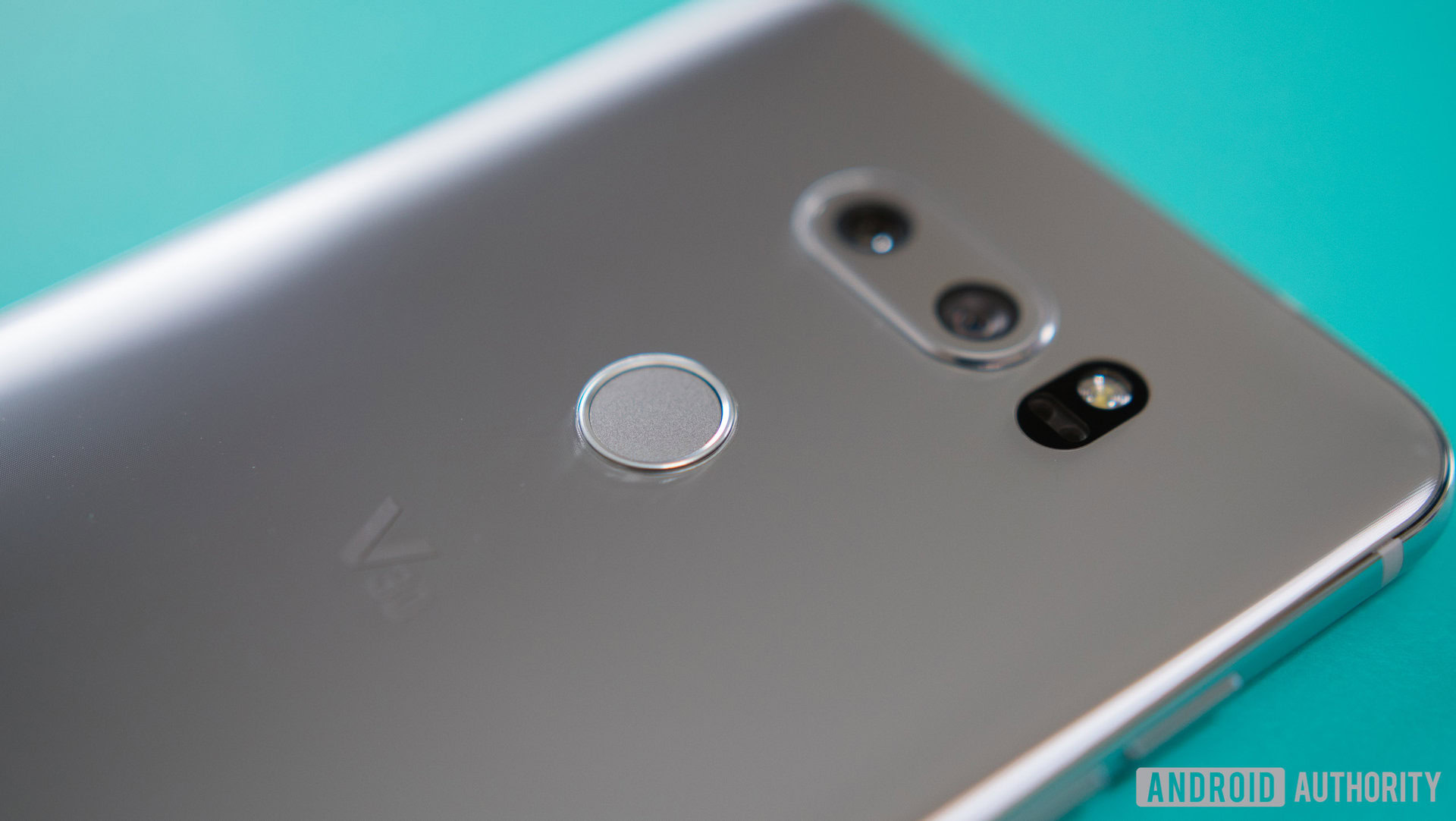
The fingerprint sensor is centered on the backside, where you would typically expect to find it on an LG phone. It’s fast, accurate, reliable, and comfortable to reach with an index finger. What I enjoy most about LG’s fingerprint sensor is that it doubles as the phone’s power button. This eliminates the need for a dedicated side mounted power key and is a feature that I think more manufacturers should adopt.
Audio is a big part of the experience on the LG V30 and it’s one that audiophiles will definitely enjoy. For starters, the V30 retains the headphone jack so no adapters are required here. Secondly, the V30 utilizes a 32-bit Hi-Fi Quad DAC from ESS Technology to drive the audio experience. This year the audio tuning is done by B&O regardless of region.
Audio is a big part of the experience on the LG V30 and it's one that audiophiles will definitely enjoy.
This means audio will be of much higher quality with less distortion, less noise, and an overall improved dynamic range. This also means that the V30 can properly drive a pair of high impedance headphones. While using high impedance will give you the best experience and allow you to take full advantage of what the Quad DAC can provide, the improved audio experience is still noticeable on a more average pair of over the ear cans.
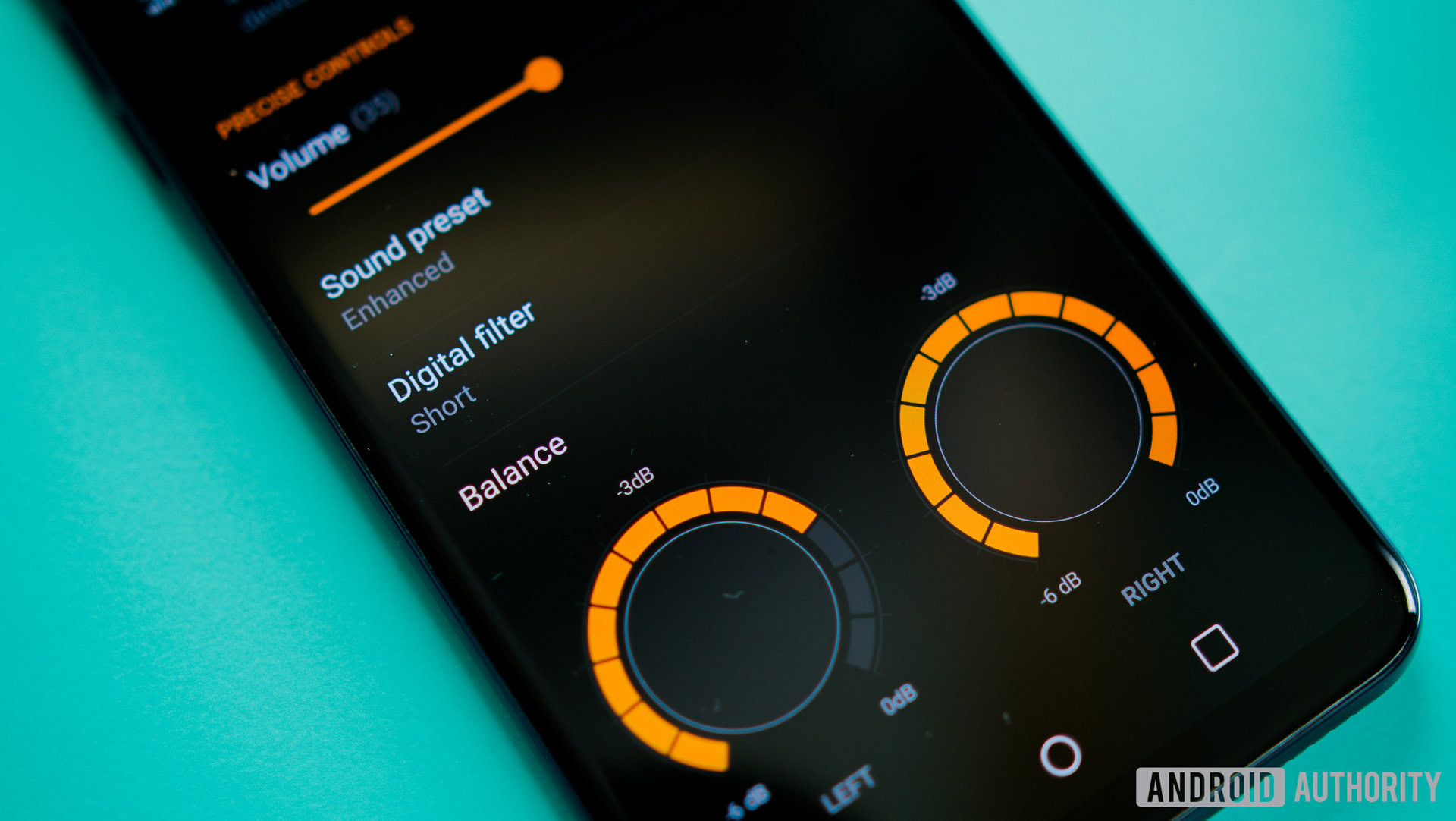
Just like the LG G6 or last year’s V20, the Quad DAC provides a 75-stage volume control and left and right channel controls, but this year LG has added some new customization options to allow for further tuning of the audio to your ears. There are now sound presets and digital filters which make for quick and easy adjustments of the audio. Sound presets range from normal, enhanced, detailed, live, and bass. Digital filters offer the choice of short, sharp, or slow, which will either give you an ambient, natural, or clearer sound.
Another new improvement to the V30’s audio experience is the support for Master Quality Authenticated (MQA). This is a relatively new audio format that allows for Hi-Res audio output at a much smaller file size. This means that streaming Hi-Res audio is a possibility without eating up your bandwidth. There aren’t many streaming services offering MQA just yet but one of the most notable ones is TIDAL. If you happen to have TIDAL with the proper subscription tier you can take advantage of the Hi-Res streaming right away. Spotify is also rumored to be on the cusp of supporting MQA.
If you prefer streaming audio over bluetooth, the V30 supports aptX HD. This is Qualcomm’s audio codec for delivering Hi-Res audio over wireless devices. While most of us will have to wait for the Android Oreo update to get aptX HD support, LG managed to include it on the V30 running Nougat.
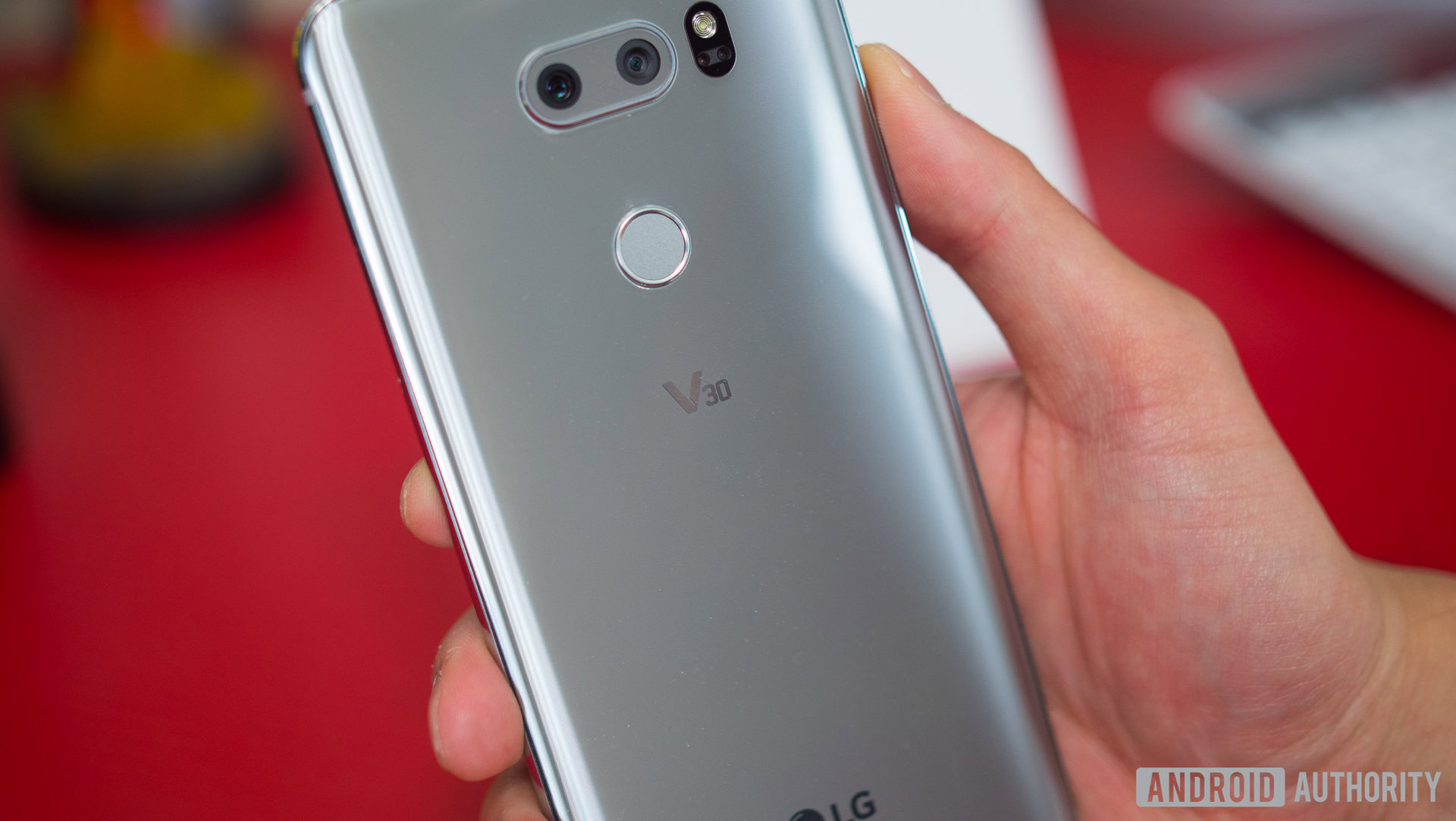
The V30 is the first in the V series to not offer a removable battery, although this was an expected decision considering the LG G6 also removed the feature. Without the ability to swap batteries anymore it’s important that the V30 can get you through a full day.
The 3,300 mAh battery was plenty capable of comfortably getting me through a full day no matter my usage. If you’re a light-to-moderate user who mainly uses their smartphone for browsing the web, social media, texting, and the occasional YouTube video, you’ll have no troubles getting through a full day. But in my experience, heavy use also seemed to pose no issues for the V30.
I play games quite frequently on my smartphone and watch several hours of YouTube a day. Even with all of that piled on top of more typical smartphone use, the V30 never struggled to get me through the day and five hours of screen on time, or more, was easily achievable. Fast charging is available via USB Type-C when you need to top off or fill up. The V30’s glass back also allows for wireless charging if you don’t want to fuss with cables.
Camera
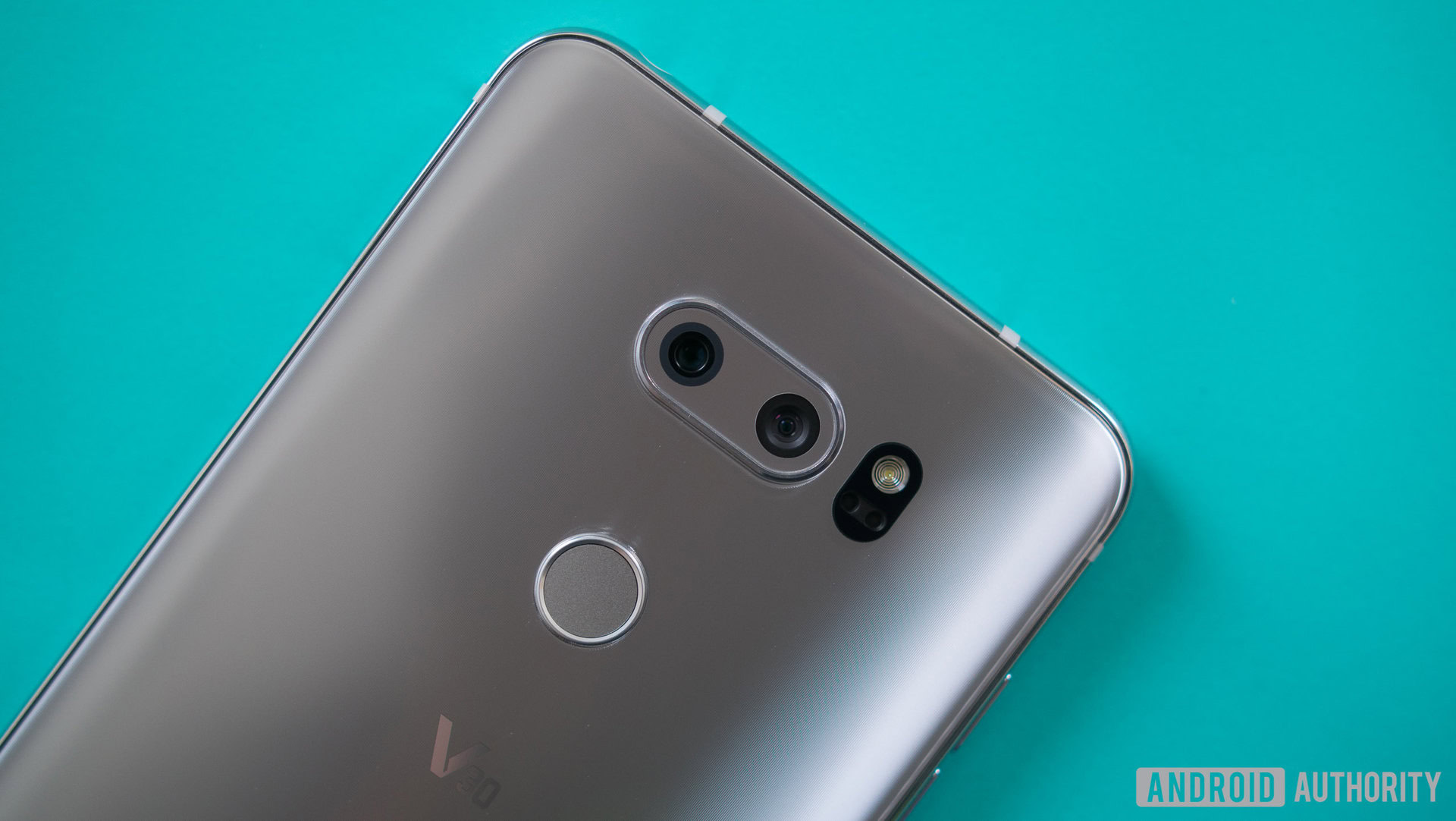
A big draw for the LG V30, as with prior V series smartphones, is its camera experience. You won’t find another smartphone that packs more features into its camera than the V30.
You won't find another smartphone that packs more features into its camera than the V30.
Just like last year’s V20 and the more current LG G6, the V30 offers two rear cameras— one standard and one wide angle lens. The main sensor is a 16 MP shooter with an f/1.6 aperture, OIS, and laser and phase detection autofocus. The secondary wide angle sensor comes in at 13 MP with a slightly narrower aperture of f/1.9. There’s no OIS on the secondary sensor, but it doesn’t need it due to its wide angle and the focus being set to infinity.
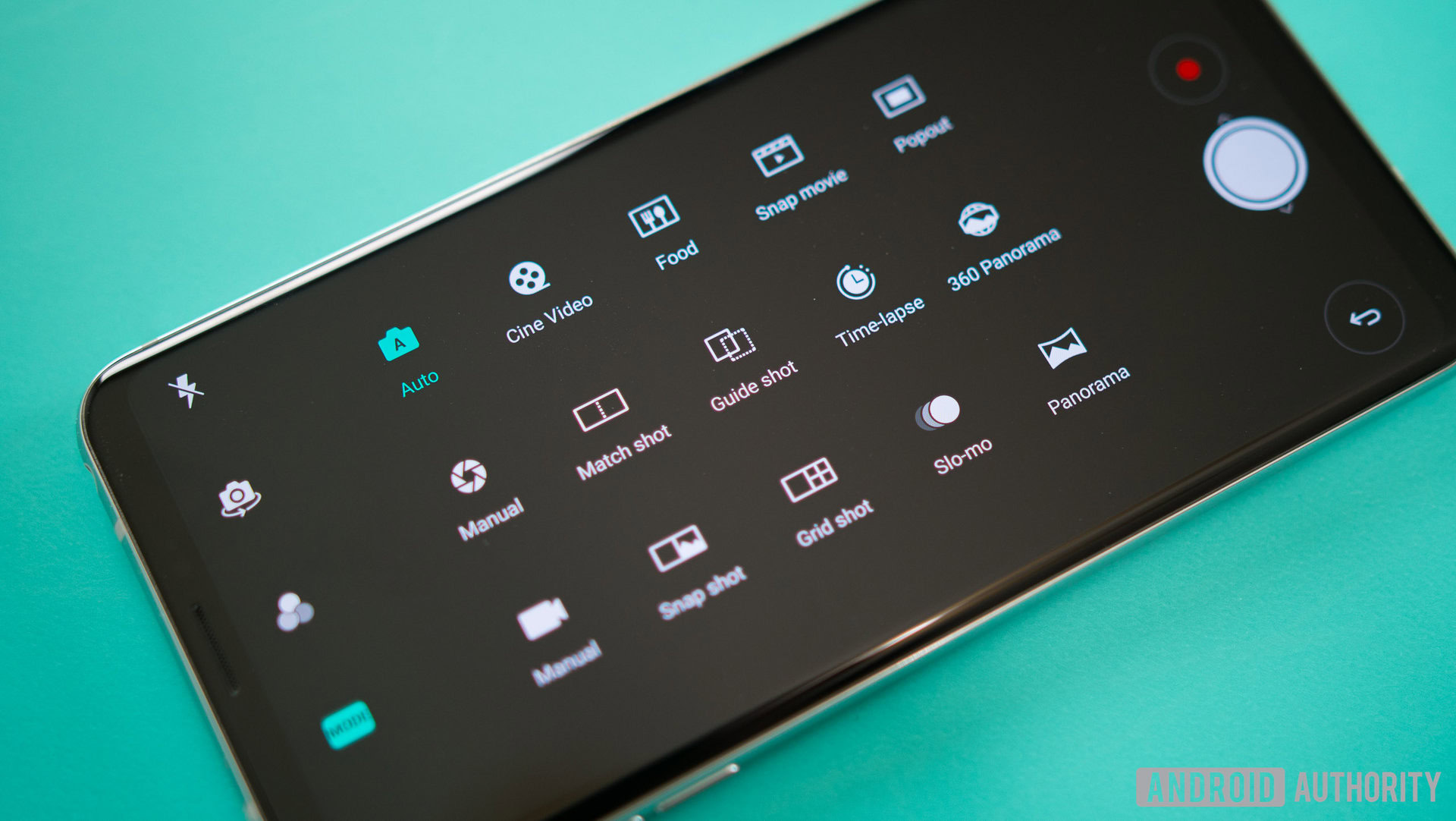
The V30’s cameras have a lot of feature. While many are from previous V series phones, others have made their way over from the LG G6. Like snap shot, which let’s you take a photo and instantly see the preview in the bottom half of the viewfinder, or guide shot, for matching the framing and composition of a previously taken photo.
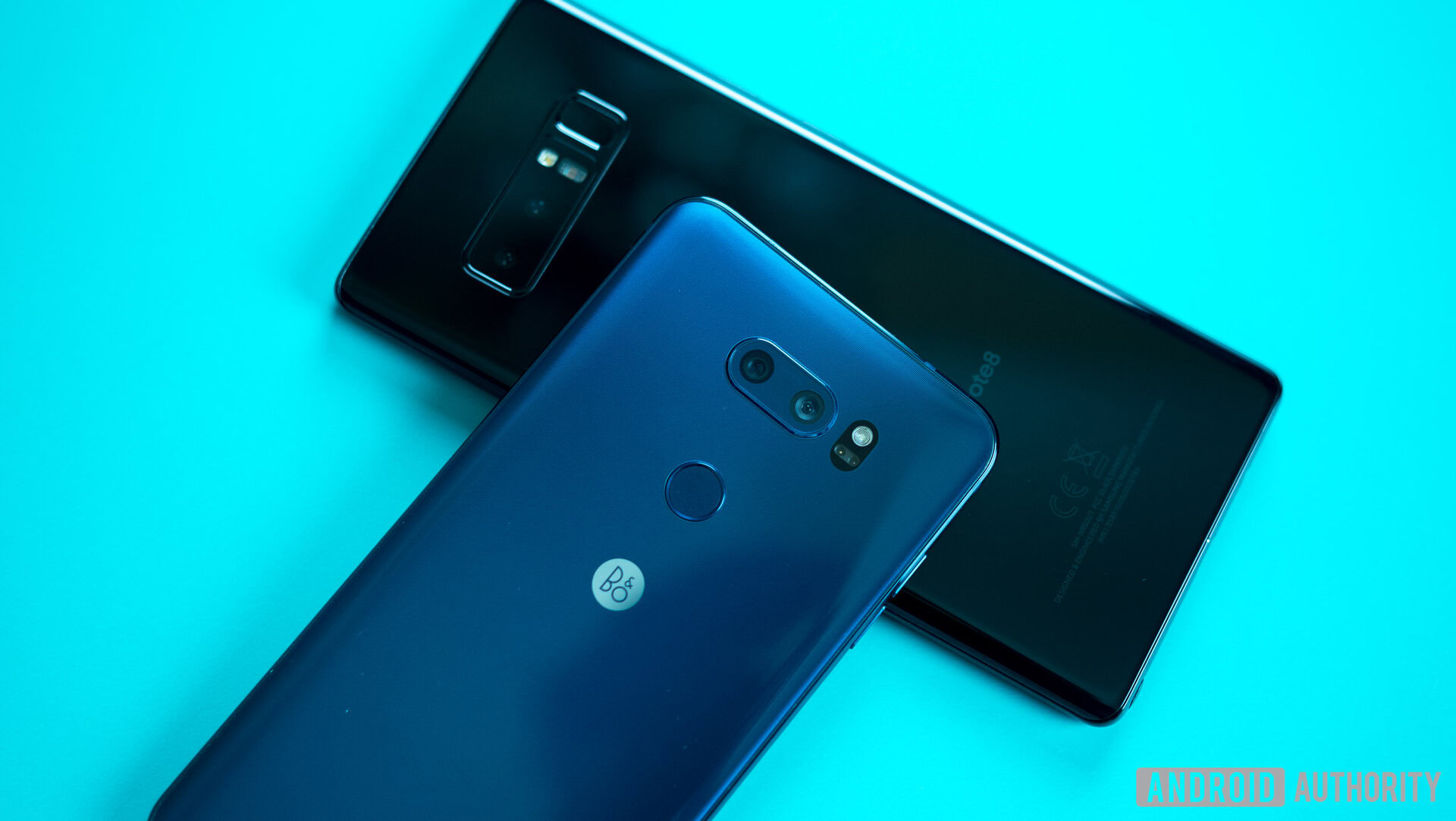
Manual controls are available on both the photo and video side of things. While this isn’t a unique feature, LG’s manual controls are very extensive, offering useful tools that you normally only find on DSLRs or mirrorless cameras such as a histogram, horizon leveler, and focus peaking.
One of the newest features that LG has added to the V30’s camera is called Graphy. This let’s you take the look and feel of a pre-existing photo and apply its settings to the next photo that you take. This not only gives your photo a very specific look but it means you don’t have to fumble around with filters or editing the photo after the fact. It works well but the pre-existing image that you pick needs to match the current lighting situation or else you’ll have to make adjustments to ISO and shutter speed for the proper exposure.
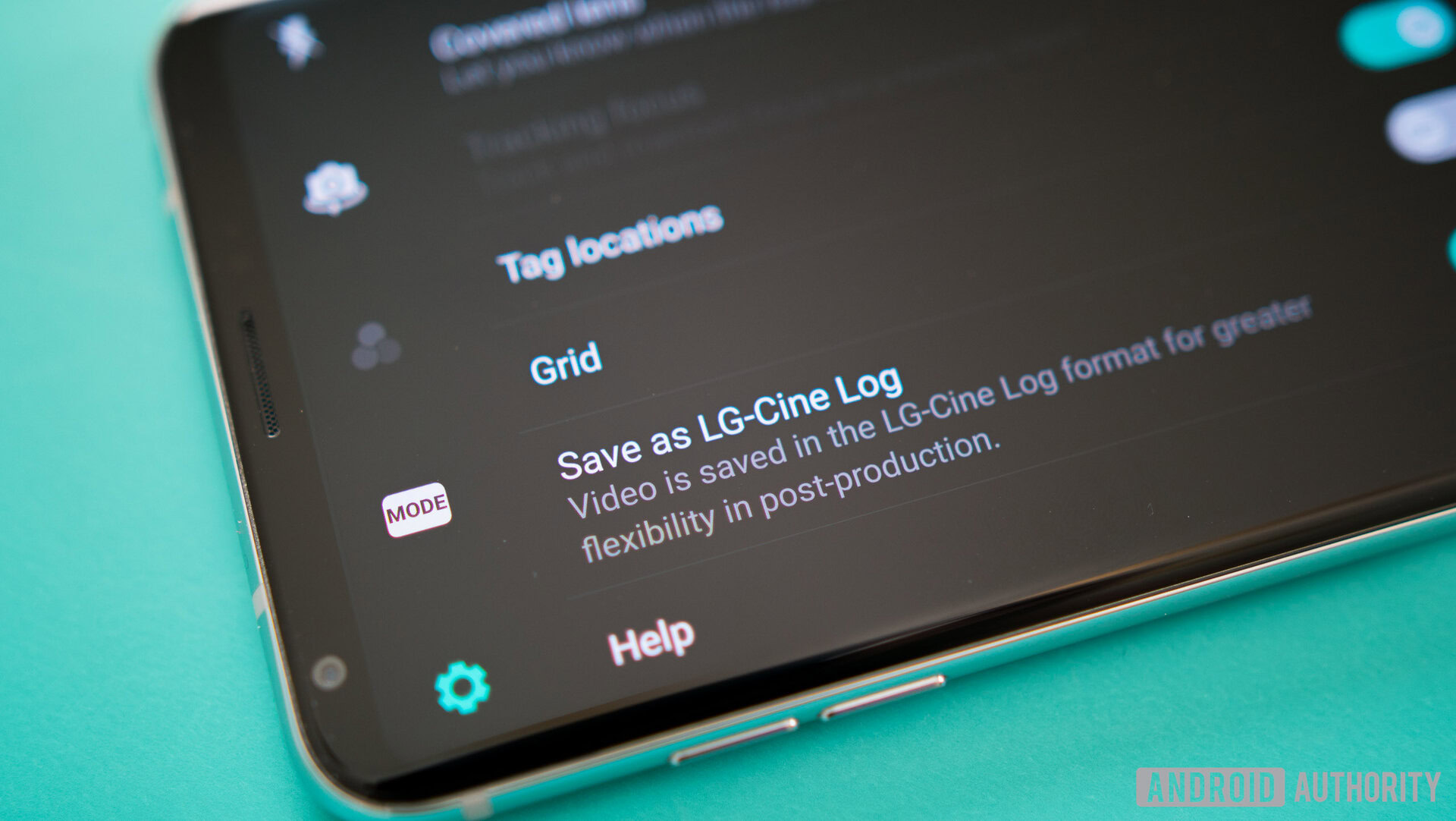
The other new features added to the camera apply to video, and will help you take your smartphone videography to the next level. First is the ability to shoot log footage. Log profile is typically found in DLSRs or mirrorless cameras. It provides a flatter image and better dynamic range allowing for heavier manipulation in post production.
If you’ve ever shot in log you’ll definitely appreciate the presence of this feature, but it isn’t all it’s cracked up to be. The bitrate from the footage is rather low even when on high settings, making it tough to push the colors in post production without the image falling apart. The log footage is also extremely green in color and it takes quite a bit of effort to get the colors and peoples’ skin tones looking natural. The availability of log footage alone definitely puts the V30’s video recording capabilities miles ahead of other smartphone cameras, but it could be better.
The availability of log footage alone definitely puts the V30's video recording capabilities miles ahead of other smartphone cameras, but it could be better.
If you’re not into grading footage in post production, LG has another feature called Cine Video. This lets you shoot video while applying LUTs, or color grading presets, directly in camera, to give you the desired look. It’s simple, easy and eliminates the need for off loading your footage in order to grade it. I would imagine most users will use this instead of log, due to the simplicity alone.
Flagship smartphones tend to perform very well outdoors or in well-lit situations and the LG V30 is no different. Photos are nice and crisp with plenty of detail and sharpness and the colors have a pleasant amount of vibrancy to them. The V30 also does not appear to be as aggressive with sharpening as previous LG phones which is a definite improvement. Dynamic range could be better, though, as detail in highlights is lost due to overexposure in these areas.
The wide angle lens is certainly a lot of fun to use and makes it easy to fit more into the frame without having to take steps backwards. It makes landscape shots look breathtaking and there’s less barrel distortion now, meaning you no longer have that GoPro-like look at the edges of the shot.
The quality of the wide angle lens is not as good as the main sensor, but it's a lot of fun to use.
As expected, the quality of the wide angle lens is not as good as the main sensor. The lack of autofocus means a softer image overall and overexposure in highlights is more problematic. These problems become more apparent as the lights start to dim and the sun sets.
Images from the wide angle lens in low light lack sharpness, detail, and typically struggle with proper white balance. The main sensor achieves much better results in every aspect including overall color, and black levels are handled well without much noise or clipping. While there are times you may want to use the wide angle lens in low light such as a quick group photo, I’d recommend you avoid using it if you can due to its inferior picture quality when compared to the main sensor.
For selfie lovers, the V30 sadly doesn’t come with the most impressive front-facing camera. Its 5 MP resolution is fairly low compared to most other smartphones on the market. The quality is passable though and still good enough for social media, but it falls behind competitors in features and overall quality.
Software
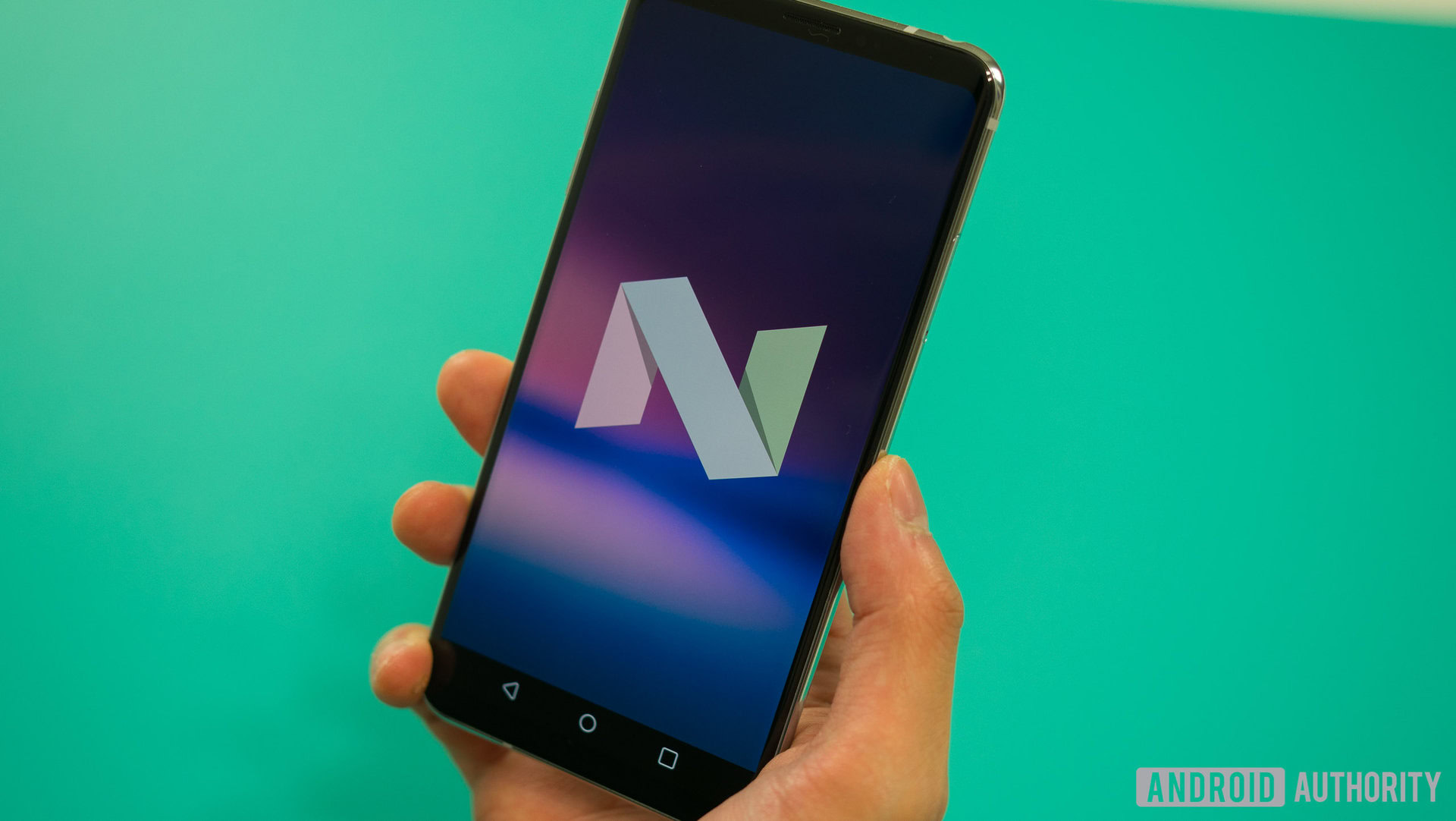
The software experience on the LG V30 is very similar to LG’s early 2017 flagship, the G6. If you’ve used any recent LG phone you should already know what to expect. LG’s UI feels are improved with this iteration, with cleaner app redesigns and less intrusive software feature. But it still feels somewhat cartoony to me. Though some animations are still rather awkward, icons are bright and vivid and there are many color flourishes sprinkled throughout the UI.
The always on display is one of my favorites. Not only is it great for showing battery-friendly notifications and access to commonly used functions such as the flashlight, wifi, or media controls, but it’s also highly customizable. There are many different clocks to choose from and LG preloads a good amount of fun images that can be used for the AOD, or you can use a custom image of your own.
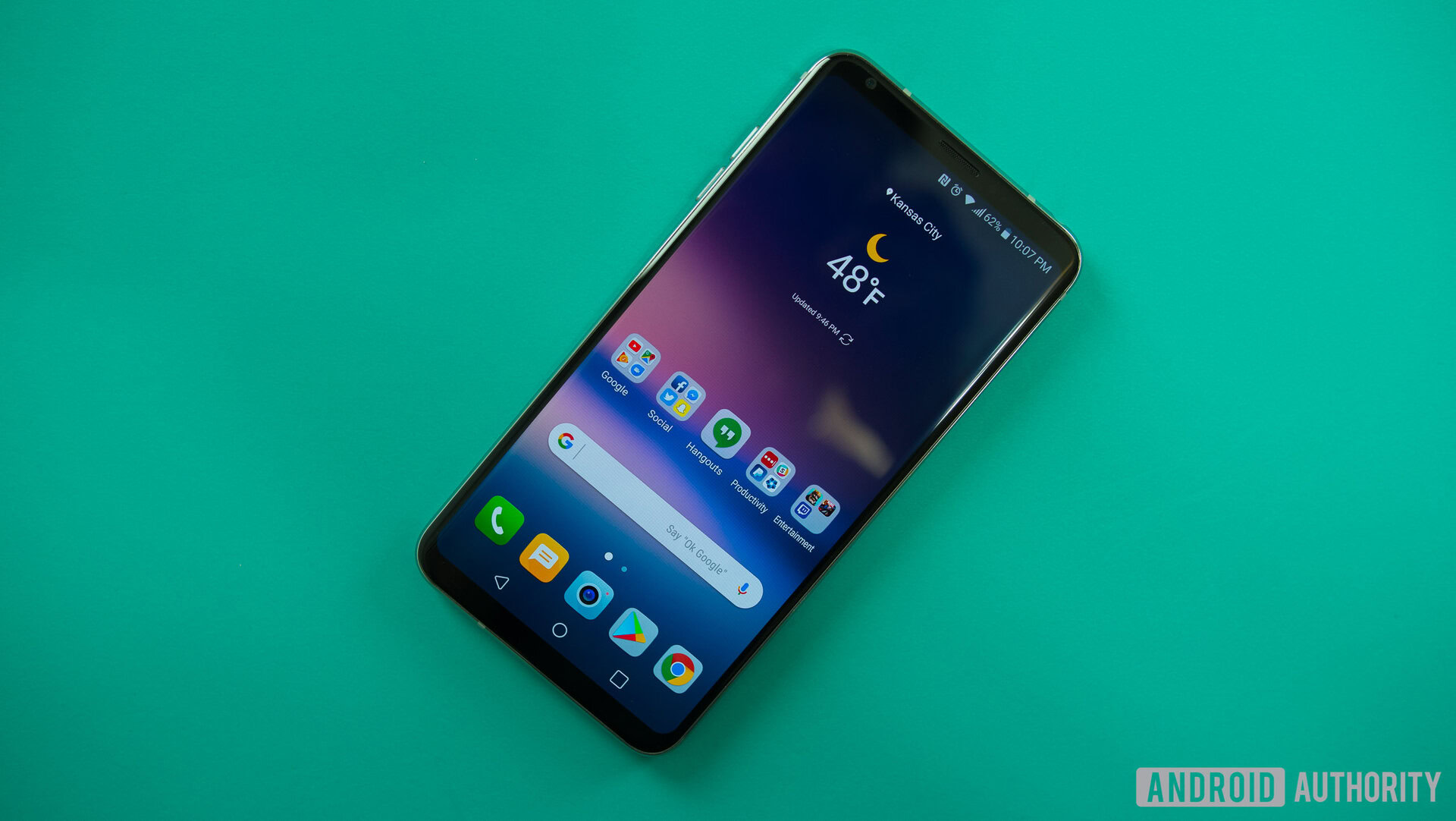
One of the newest software tweaks to the LG V30 is the floating bar. This feature’s purpose is meant to replace the functionality that was previously achieved through the secondary display of the V20 and V10. The floating bar is simply a toggle bar that can be repositioned anywhere along either edge of the display and is brought into view with a simple tap. It’s a similar concept to Samsung’s edge UX as it can be used for shortcuts to apps or specific phone functions, provide media controls, contact shortcuts, and different screen capture functions such as creating a GIF or drawing on a screenshot.
While I don’t use this feature much I personally like this implementation better, as the secondary display on the V10 and V20 were tough to use due to their location. Because the floating bar is also software based it can easily be turned off, whereas previously you were stuck with the secondary display whether you liked it or not.
Currently the LG V30 is running on Android Nougat and not the latest Android Oreo, which is odd considering the V20 was the first phone to launch with Nougat last year. It seems like LG couldn’t pull the same trick this year with its accelerated launch window, but fingers crossed that it will get the delicious Oreo update soon.
Gallery
Specifications
| LG V30 | |
|---|---|
Display | 6.0-inch QuadHD+ P-OLED FullVision 2,880 x 1,440 resolution 538 ppi Corning Gorilla Glass 5 18:9 aspect ratio |
Processor | Octa-core Qualcomm Snapdragon 835 Mobile Platform |
GPU | Adreno 540 |
RAM | V30: 4 GB LPDDR4x V30+: 4 GB LPDDR4x |
Storage | V30: 64 GB, UFS 2.0 V30+: 128 GB, UFS 2.0 MicroSD expansion up to 2 TB |
Cameras | Rear cameras - Main: 16 MP Standard Angle sensor with ƒ/1.6 aperture, laser detection autofocus, OIS, EIS - Secondary: 13 MP Wide Angle sensor with ƒ/1.9 aperture Front camera - 5 MP Wide Angle sensor with ƒ/2.2 aperture |
Audio | 32-bit Advanced Hi-Fi Quad DAC 3.5 mm headphone jack |
Battery | 3,300 mAh Non-removable Wireless charging Qualcomm Quick Charge 3.0 |
IP rating / other certifications | IP68 water and dust resistance MIL-STD 810G |
Network | LTE-A 4 Band CA |
Connectivity | Wi-Fi 802.11 a, b, g, n, ac Bluetooth 5.0 BLE NFC USB Type-C 2.0 (3.1 compatible) |
SIM | Nano SIM |
Software | Android 7.1.2 Nougat LG UX 6.0+ |
Colors | Aurora Black, Cloud Silver, Moroccan Blue, Lavender Violet |
Dimensions and weight | 151.7 x 75.4 x 7.3 mm 158 g |
Pricing & Final Thoughts
The unlocked LG V30 is available for pre-order now through B&H for $829.99 with expected availability in December. Through U.S. carriers prices will vary, so expect it to cost you $800 or more. While the price tag is certainly no drop in the bucket, it’s fairly standard flagship pricing and still undercuts competing devices like the Galaxy Note 8.
The LG V30 justifies its price tag and is easily a top contender for smartphone of the year.
LG’s goal with the V series has always been to provide a photo, video, and audio experience that is unparalleled by any other smartphone. Not only does it beautifully tick all those boxes, it’s also wrapped up in one sleek package. The design is gorgeous and even greater to hold, and the display is quite the attention grabber. The LG V30 justifies its price tag and is easily a top contender for smartphone of the year. If you haven’t paid attention to the LG V series of smartphones, this is one year you definitely should.